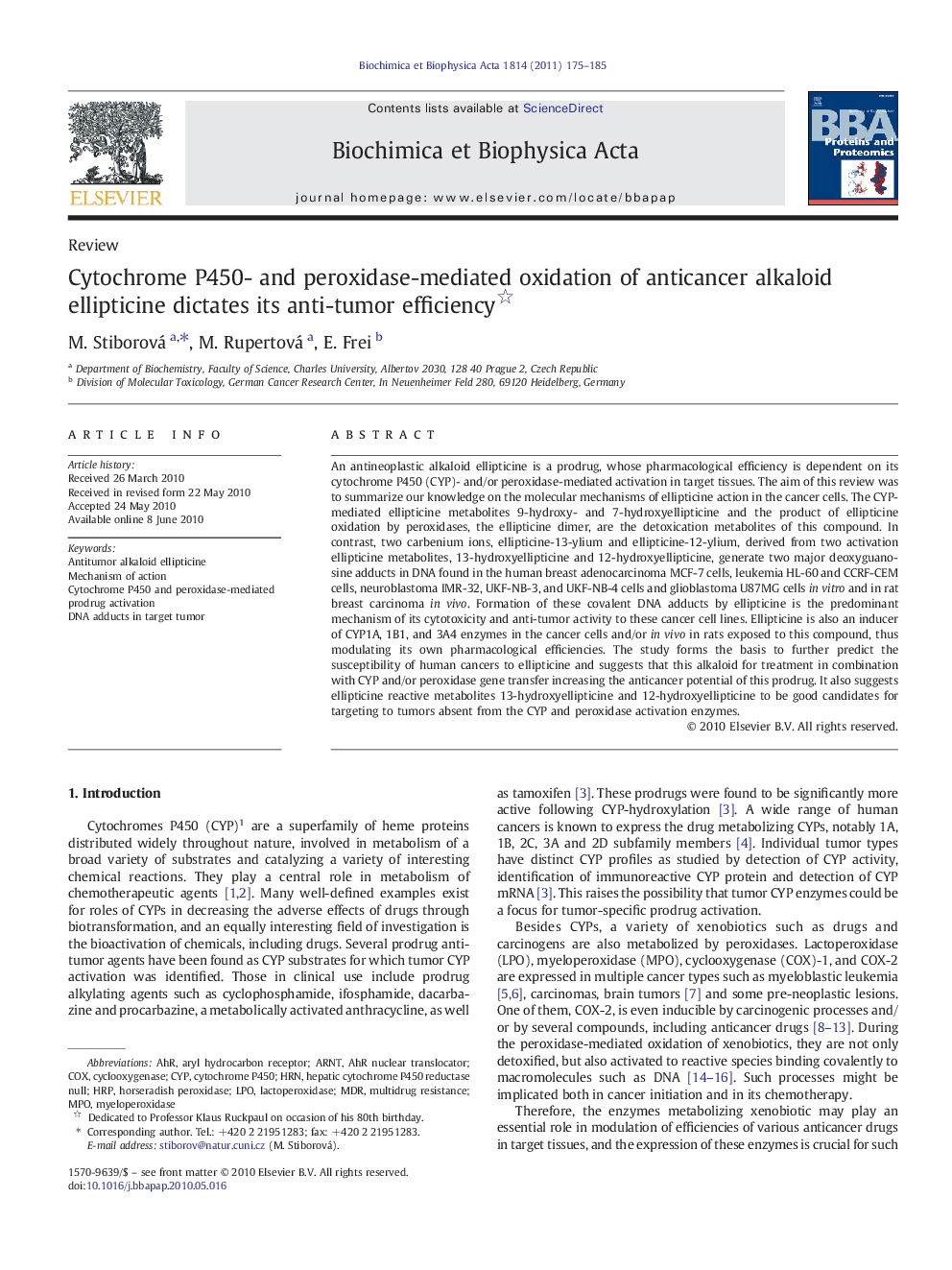| Article ID | Journal | Published Year | Pages | File Type |
|---|---|---|---|---|
| 1178796 | Biochimica et Biophysica Acta (BBA) - Proteins and Proteomics | 2011 | 11 Pages |
An antineoplastic alkaloid ellipticine is a prodrug, whose pharmacological efficiency is dependent on its cytochrome P450 (CYP)- and/or peroxidase-mediated activation in target tissues. The aim of this review was to summarize our knowledge on the molecular mechanisms of ellipticine action in the cancer cells. The CYP-mediated ellipticine metabolites 9-hydroxy- and 7-hydroxyellipticine and the product of ellipticine oxidation by peroxidases, the ellipticine dimer, are the detoxication metabolites of this compound. In contrast, two carbenium ions, ellipticine-13-ylium and ellipticine-12-ylium, derived from two activation ellipticine metabolites, 13-hydroxyellipticine and 12-hydroxyellipticine, generate two major deoxyguanosine adducts in DNA found in the human breast adenocarcinoma MCF-7 cells, leukemia HL-60 and CCRF-CEM cells, neuroblastoma IMR-32, UKF-NB-3, and UKF-NB-4 cells and glioblastoma U87MG cells in vitro and in rat breast carcinoma in vivo. Formation of these covalent DNA adducts by ellipticine is the predominant mechanism of its cytotoxicity and anti-tumor activity to these cancer cell lines. Ellipticine is also an inducer of CYP1A, 1B1, and 3A4 enzymes in the cancer cells and/or in vivo in rats exposed to this compound, thus modulating its own pharmacological efficiencies. The study forms the basis to further predict the susceptibility of human cancers to ellipticine and suggests that this alkaloid for treatment in combination with CYP and/or peroxidase gene transfer increasing the anticancer potential of this prodrug. It also suggests ellipticine reactive metabolites 13-hydroxyellipticine and 12-hydroxyellipticine to be good candidates for targeting to tumors absent from the CYP and peroxidase activation enzymes.
